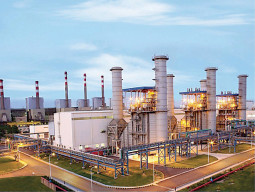
The worst days are ahead as the fuel supplier – Pakistan State Oil (PSO) – has sent an SOS to ministries of finance, water and power and petroleum to provide Rs50 billion for getting furnace oil during the ongoing month if the government wants to keep wheels of Independent Power Plants (IPPs) turning.
“Now, the PSO has warned ministries that it will not be able to provide the required supply of furnace oil to power plants, if government does not release Rs25 billion on immediate basis and Rs25 billion by end of this month,” a source said quoting a PSO communication.
He said the PSO receivables had surged to Rs155 billion and major defaulter was the power sector.

Officials said the PSO was providing 18,000 to 20,000 tons furnace oil to power sector against the requirement of 25,000 tons to operate plants including Kapco and Hubco. The PSO had further warned that it could face default of its Letter of Credits (LCs) if money was not released.
Even power sector receivables against different clients including private sector and provincial governments had exceeded Rs500 billion against payable of Rs288 billion.
Different official sources reveal that the situation may worsen in the coming months – May, June and July – as circular debt is mounting, making it difficult for the PSO to provide the required supply of furnace oil. Majority of the power plants in the country is operating on furnace oil due to curtailment of gas supply.
According to official working of the government, power plants received only 47% of the earmarked quantity of gas in the ongoing fiscal year, leading to increase in power tariff and widespread outages.
According to an official assessment, the gap between demand and supply of gas is widening and production is expected to drop to about half of existing levels by 2020, if new reserves are not tapped or output is not increased from existing fields.
Power plants were allocated 1.525 bcfd in the current fiscal year, but got only 718 mmcfd, constituting 47.1% of the allocation because of pressure on supplies, particularly in winter.
After coming into power, the Pakistan Muslim League (PML-N) government had released Rs480 billion to power producers to clear circular debt and announced that it would help overcome power crisis.
However, out of the total amount, Rs25 billion were paid to power producers on account of capacity payment and even those plants got money, which remained shut due to unavailability of fuel. Sources said the IPPs were more comfortable with circular debt as they got money even without operating on account of capacity payment.
Published in The Express Tribune, April 14th, 2014.
























1714034954-0/WhatsApp-Image-2024-04-25-at-1-48-04-PM-(1)1714034954-0-270x192.webp)




















COMMENTS
Comments are moderated and generally will be posted if they are on-topic and not abusive.
For more information, please see our Comments FAQ